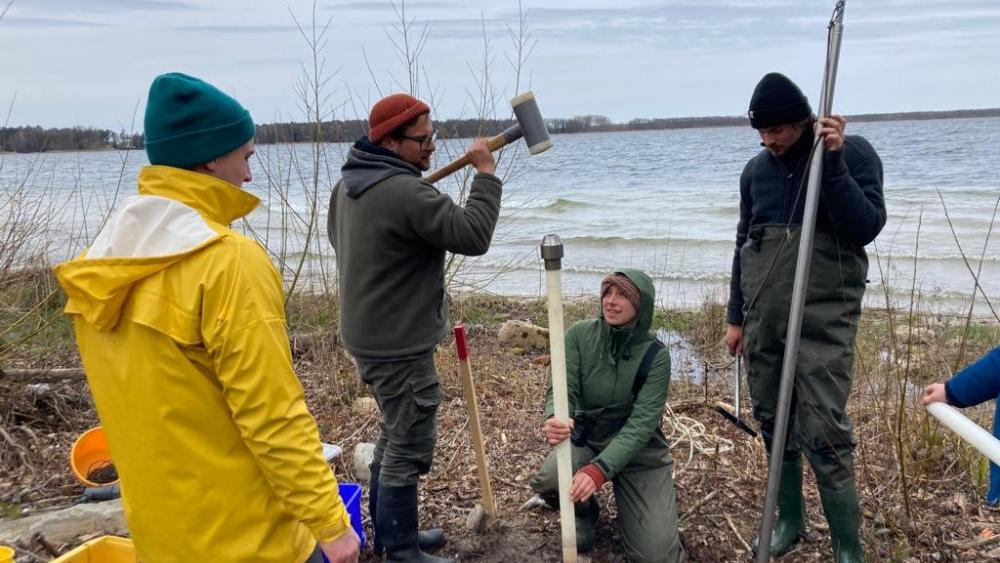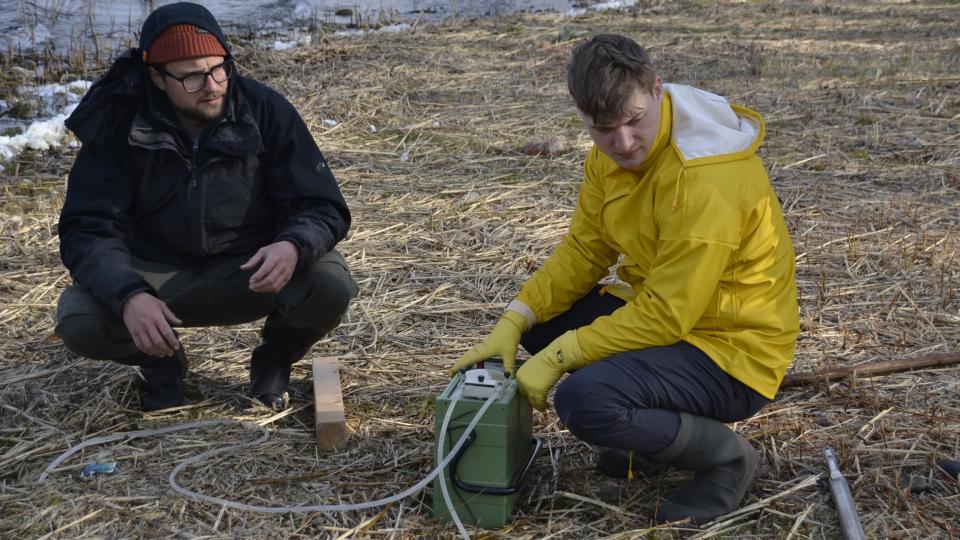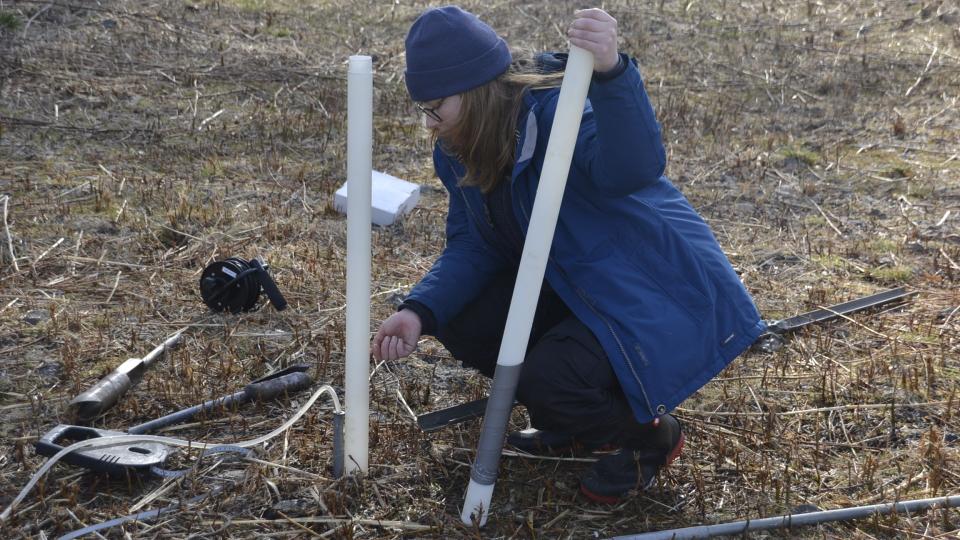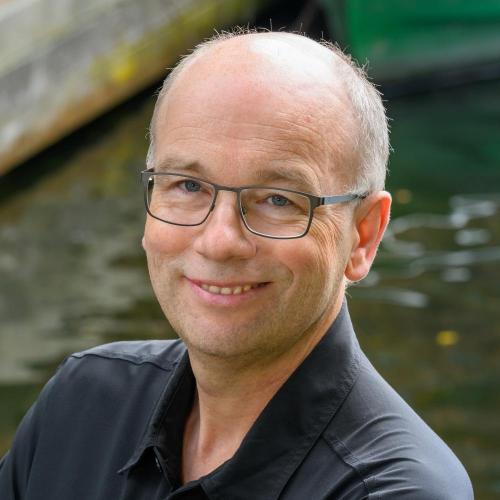
The groundwater was sampled at many locations around Lake Arendsee. The research team was supported by citizens who provided water samples from their wells. | Photo: Jörg Lewandowski
IGB scientist Jörg Lewandowski summed up: "There are surprisingly few changes. The new studies confirm the results from 2012." At that time, the researchers had found that the groundwater under the city had very high nutrient loads, especially phosphorus, and that more than half of the phosphate load in the lake was attributable to the groundwater. Jörg Lewandowski explained: "We have the unfavorable situation at Lake Arendsee that the strongest groundwater inflow comes from the direction where phosphate concentrations are also particularly high." His colleague Christoph Reith added: "This mainly affects the shore section from the monastery to the pale."
The highest phosphorus concentrations measured in the inflowing groundwater were 3000 to 5000 micrograms per liter. For comparison, Lewandowski stated: "As a natural concentration, I would expect 10-20 micrograms per liter in this groundwater and target concentrations of 20-30 micrograms per liter in the lake." Currently, the lake has phosphorus concentrations of about 170 micrograms per liter. This consistently leads to undesirable algal blooms, as well as a loss of biodiversity.
Why is the groundwater under the urban area so heavily polluted with nutrients?
Christoph Reith explained the scientists' conclusions from the results: "According to the exclusion principle, we try to exclude as many nutrient sources as possible, and what then remains is the most likely source: phosphate can be introduced into the groundwater in agriculture via liquid manure or mineral fertilizers. But we can largely rule that out at Lake Arendsee, because groundwater concentrations in agricultural areas are quite low." Phosphate could also come from contaminated sites. Jörg Lewandowski adds, "If phosphate originated from a large contaminated site, then a large, broad contaminates plume would be expected downstream of that site. Instead, the many groundwater samples that the citizens of Arendsee have thankfully provided have shown that there must be many point sources in Arendsee. Close together there are high and low phosphate concentrations."
Another possible source of phosphate is fertilization of private gardens. That's harder to rule out. Former soakaways are also a possible source. If they have not been properly decommissioned, phosphate could still leach into groundwater. Another possible source is a leaking sewer system. There are estimates from the German Association for Water Management (DWA) that 10 percent of wastewater seeps through leaks on its way from households to wastewater treatment plants. Since pharmaceutical residues and sweeteners were found in some groundwater samples in 2012, at least part of the high nutrient concentrations in groundwater can be attributed to sewer leaks. Christoph Reith explained: "Neither former soakaways nor fertilization of private gardens can explain these substances in groundwater because they are not contained in fertilizer or were not on the market at the time the soakaways were operated." Because the investigations are complex, these analyses have not yet been completed. Jörg Lewandowski said: "In my opinion, the problem of leaking sewer systems and their impact on groundwater has been insufficiently considered throughout Germany so far. In addition to the public sewer system, this primarily affects private house connection pipes, which exceed the public sewer system in total length and whose inspection and condition are often worse than those of the public sewer system."

Measuring campaign 2022 at Lake Arendsee. | Photo: Jörg Lewandowski

Measuring campaign 2022 at Lake Arendsee. | Photo: Jörg Lewandowski

Measuring campaign 2022 at Lake Arendsee. | Photo: Jörg Lewandowski





